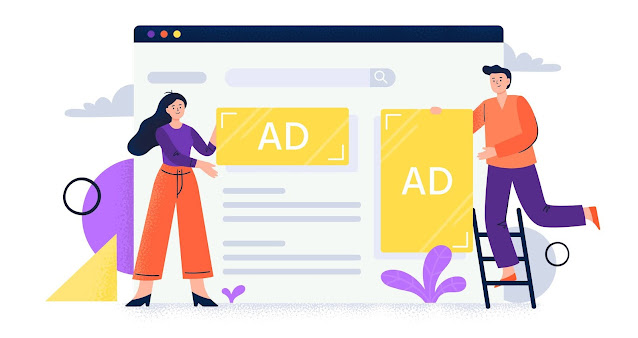
One of the benefits of posting ads on your website is that you can monetize your website with little effort required on your part. This means you earn money by posting ads from other businesses. You may also earn commissions when a visitor clicks on the ads on your website.
Having an ad space isn’t enough to ensure that people will be attracted to whatever images or words are on there. You need to know how and where to place ads for maximum impact without being off-putting. Especially in places like the UK, people who want to monetize their websites by way of ads seek the help of experts in companies such as media agencies in Manchester. While a successful integration may be challenging, it can be quite worthwhile for your business.
Check out the tips below to find out how you can integrate advertising into your web design.
Choose A Proper Layout And The Right Size
Businesses use graphics or photos in their ads. These visual elements make ads more memorable and interesting to the eyes of viewers. They also give people more reason to click on the ads to learn more about a company’s products or services. However, such components can also be disruptive and take up a lot of space on your site. If an image is too big, it can negatively affect the flow of the page.
There are different types of ads depending on their size and layout:
- Full-Page Ads – These are considered the most expensive option as they go above and below the fold of the webpage.
- Half-Page Ads – These ads are less expensive than full-page ones but are more costly than other types. They’re often used by publications to show their sponsors.
- Banner Ads – These are the most common ads found on the majority of web pages today. They can be placed in the side, top, or bottom sections of the page.
- Large Square Ads – These are placed at the sides of web pages.
- Small Square Ads – These are commonly used to help the audience remember a related product, service, or post from their recent searches that are relevant to the content on the page.
The ad type is an important consideration, especially since one of the growing web design trends today is minimalist website design. The ads on your website shouldn’t ruin the overall flow and design of the website. Aside from that, advertisements may demand a lot of space from your website layout. You should always consider the size and layout of the advertisement so it won’t look out of place and awkward.
Strategies used by popular websites involve using smaller ads and spreading them in different parts of the webpage. Some website owners go for banners placed in strategic locations within the webpage.
You should also take into account the businesses that the ads are for so they won’t feel out of place within your content. If your niche is about software, you should choose to advertise businesses in the same field.
Consider The Position Of The Ads

You need to decide whether you want the space for ads to be prominent or not. Even if it’ll occupy the area on a page, ensure that it looks intentional and not random.
The ad’s position would also determine whether it’s going to receive attention or not. You need to place ads where they can get noticed without being too distracting. Also, you can consider using pop-up ads instead, although you have to be careful with these as they can be disruptive if their timing isn’t right. No one wants to have the content they’re looking at suddenly blocked by an advert.
Know Your Audience
It’s also important for you to understand the behavior of your audience when choosing the right locations for ads. To get to know your audience better, you can use a variety of tools:
- Analytics Or SEO tools – These can be used to monitor and analyze where the traffic is coming from and your audience’s preferences. They also record which devices your visitors use when they surf your pages.
- Heatmap – This tool has been popularly used by marketers for many years to detect which parts of a website are more attractive for the audience. A heatmap collects web page data and displays which content and spaces are clicked on more or getting more attention.
Once you have information on your audience’s behavior and how they interact with your website, you can properly incorporate ads into your website design.
Check Your Ads’ Viewability
Placing ads on your website doesn’t necessarily mean that your visitors are going to see them, so you should look into the viewability of each ad you accommodate. When an ad has a high viewability score, you know that you’ve placed them in a good location. When your website has a high ad viewability rating, you’ll get higher bids from advertisers because they know their materials have a higher chance of being seen when placed on your website.
How can you measure an ad’s viewability? Google has certain criteria for this. It considers an ad viewable when visitors look at it for at least one second. Meanwhile, a video ad is deemed viewable when a person looks at it for more than two seconds. When this happens, the views will be logged under ‘active view’ in your analytics.
To improve ads’ viewability, do the following:
- Place them in strategic locations, as discussed earlier.
- Optimize your page loading time.
- Optimize your website for mobile viewing.
It’s also important to test how your ads will look on different channels. Aside from that, it’s beneficial to evaluate your existing ads’ performance. Review metrics like click rates and revenue generation. Keep working on how you can improve on your weak areas as well.
Conclusion
Integrating advertising into your web design is an excellent way to increase the traffic to and revenue for your website. Ad placement, layout, and size are some of the most important aspects you need to consider to ensure that the ads you place on your website are seen by your audience.
You should also ensure that the ads won’t be detrimental to the flow and overall design of your website. Lastly, how your audience behaves and what they like are critical pieces of information you need to make the most of to ensure that you’re placing ads in locations where people will likely interact with and click on them.